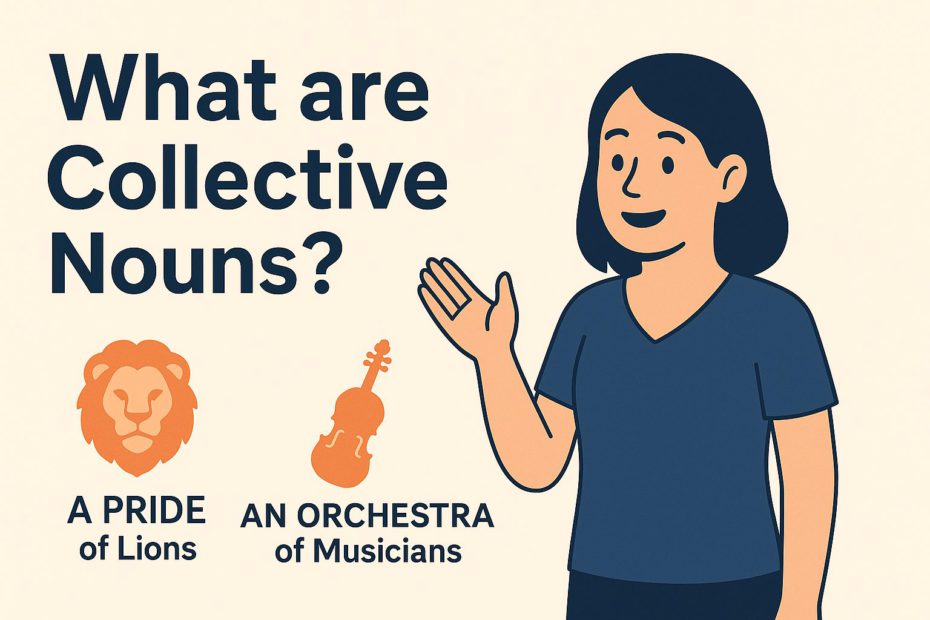Language is more than just a tool for communication—it’s a living system that shapes how we express ideas, organize thoughts, and connect with others. Among the many fascinating facets of English grammar, collective nouns stand out for their ability to group individuals into a single unit with a single word. In this post, we’ll explore what collective nouns are, how they work, and how to use them with precision.
What Are Collective Nouns?
A collective noun refers to a group of people, animals, or things treated as a single entity. Although the group is made up of multiple individuals, the collective noun is treated as singular in form.
📌 Examples:
- A team of athletes
- A flock of birds
- A bundle of sticks
Though these nouns represent multiple items or beings, they are grammatically treated as singular (most of the time—but we’ll get to that nuance shortly).
Common Categories of Collective Nouns
1. People
- A jury of judges
- A choir of singers
- A crew of sailors
- A staff of employees
2. Animals
- A pack of wolves
- A swarm of bees
- A gaggle of geese
- A herd of cattle
3. Objects
- A collection of coins
- A set of tools
- A deck of cards
- A fleet of ships
Singular or Plural? The Subject-Verb Agreement Dilemma
This is where collective nouns can confuse even seasoned writers.
In American English, collective nouns are conventionally treated as singular and therefore take singular verbs.
- ✅ The committee decides on the budget every year.
However, in British English, the same noun may be treated as plural:
- ✅ The committee decide on the budget every year.
So, which is right? Both. Just be consistent with your regional grammar rules. More critically, consider whether the group is functioning as a unified entity or as separate individuals.
📝 Compare:
- The team is winning the game. (Team as a unit)
- The team are arguing among themselves. (Team members acting individually)
Creative and Quirky Collective Nouns
The English language is rich with imaginative collective nouns—many rooted in medieval hunting terms or poetic invention. Some delightful examples include:
- A murder of crows
- A parliament of owls
- A crash of rhinoceroses
- A pride of lions
While not all of these are used in everyday conversation, they add flavor to both writing and speech.
Tips for Using Collective Nouns Effectively
- Clarify context – Make sure it’s clear whether you mean the group as one or the individuals in it.
- Choose the right verb – Match singular or plural based on intended meaning and regional usage.
- Avoid redundancy – Saying “a group of group members” is awkward and repetitive.
- Vary your language – Use creative collective nouns to keep your writing vivid and engaging.
Why Collective Nouns Matter
Understanding collective nouns isn’t just about grammar technicalities. It’s about mastering clarity, nuance, and elegance in your writing. Whether you’re crafting fiction, writing reports, or polishing academic essays, properly using collective nouns can elevate your style and accuracy.
Conclusion
Collective nouns are a small but mighty part of English grammar. They simplify our language by allowing us to reference groups with a single word, but they also challenge us with questions of agreement and interpretation. With the right knowledge and careful usage, collective nouns can make your communication sharper, smarter, and more sophisticated.
Next time you see a crowd, a fleet, or a flock, remember: there’s more to that word than meets the eye.

